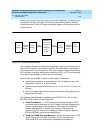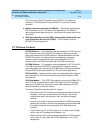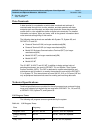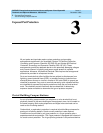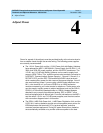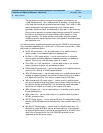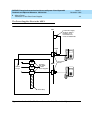
Exposed Port Protection
3-1Out-of-Building Campus Stations
3
DEFINITYEnterpriseCommunicationsServerandSystem75andSystem85
Terminals and Adjuncts Reference
555-015-201
Issue 11
December 1999
3
Exposed Port Protection
All port packs and terminals require unique protection and grounding
arrangements as defined in the checklists (
System 75 Electrical Protection,
Grounding, and Exposure Checklist
, 555-200-120 and
System 85 Electrical
Protection, Grounding, and Exposure Checklist
, 555-103-120). These
arrangements provide an adequate barrier to the potentially damaging voltages
and currents inherent in lightning and power surges present in exposed
applications. Moreover, the National Electrical Code requires that an approved
protector be provided on all exposed circuits.
Ports and terminals that utilize facilities that are subject to disturbances from
lightning, ground potential rises (GPR), or possible contact or induction from
electrical power sources or circuits in excess of 300 volts (RMS) to ground are
classified as exposed. Any ports or terminals served by such exposed facilities
are classified as exposed and require protection at both the port and terminal
ends. The checklists contain flowcharts that are beneficial in determining
exposure status and tables to determine the type of protector required.
Out-of-Building Campus Stations
An out-of-building campus station is a telephone or voice terminal that is not
physically located in the same building as the equipment room, but is located on
the same property. Both analog telephones and digital voice terminals can be
used as out-of-building stations.
Carbon block, or equivalent, protection is required at both building entrances for
analog out-of-building stations. Sneak current protection is also required.
Protection can be provided by a 4-type protector or a 3-type protector plus a
separate sneak current protector. The 4-type protector is equipped with a heat coil
for sneak current protection. The 4-type primary protector is the preferred device.




